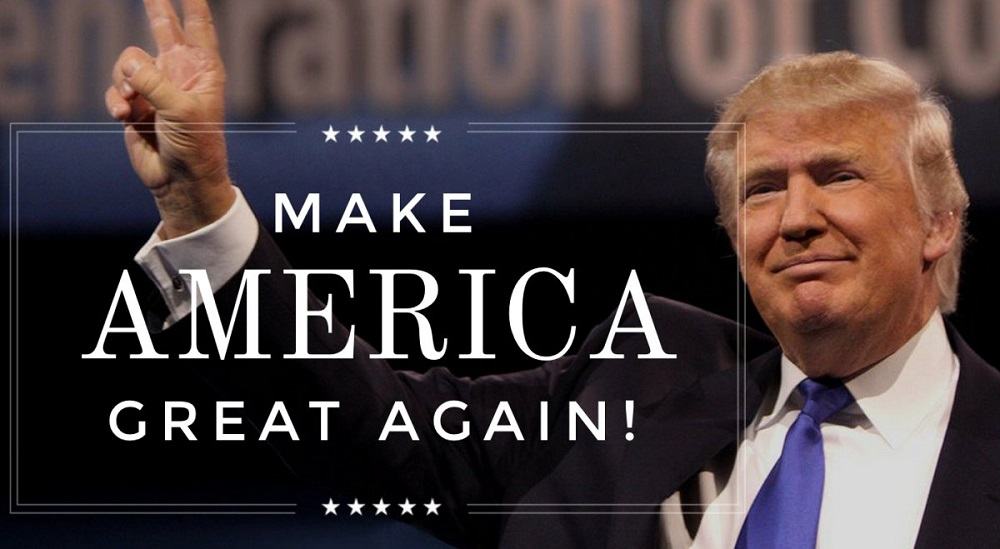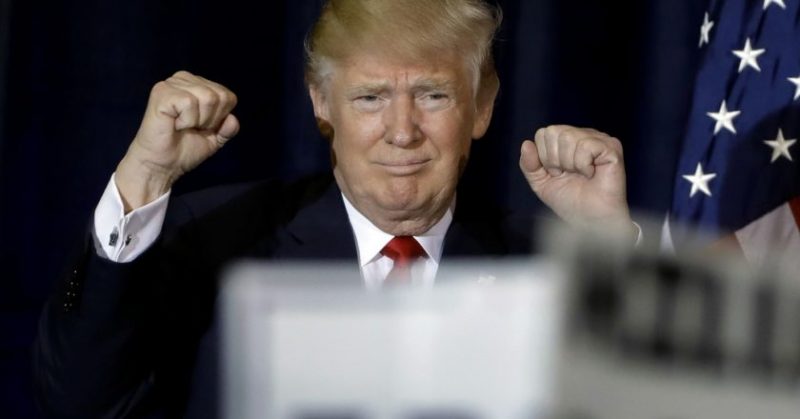
No matter what your view is on Donald Trump, he can honestly say that he did what he set out to do. He turned the 2016 Presidential Election on its head just like he did with the Republican Party.
He was able to reveal the undercurrent of racism in the United States by putting hats on it so we could see the true reality of the situation. Right now, he’s leading in the numbers which is holding up a harsh mirror to all of us. It shows us what our country has turned into and what these values truly are.
Of course, we can say that he doesn’t represent our individual personal values, but he’s shined a bright light on what’s been kept hidden in our country. While many tried to think that once Barack Obama was President it proved that America had gotten over its sad racist ways, but it only drove it further underground, and it would reveal itself when politicians began creating laws that kept minorities from being able to vote. Trump shook the hell out of everything, turned the American soil up and out came all this hatred which gobbled up his seeming ideology and proudly put a hat on their head showing who they really were.
That’s one of the biggest things that Donald Trump did for our country. He made it harder for us to believe that we had come as far as we would have like to think.
In a campaign for president packed with moments to remember, and more than a few decisions to forget, there are some that will resonate for Hillary Clinton and Donald Trump on Election Day.
Here’s a look at five key points in Trump’s race for the White House that offer clues about what will happen as the campaign comes to its conclusion.
IMMIGRATION
The Republican National Committee’s “autopsy” of Mitt Romney’s 2012 loss urged that the GOP reach out to minority voters, in part by passing immigration reform.
Trump had other ideas.
In the first moments of his candidacy, Trump said that Mexican immigrants were “bringing drugs, they’re bringing crime, they’re rapists, and some, I assume, are good people.” He pledged to build a southern border wall, putting a hard-line immigration policy at the very heart of his campaign.
The decision electrified a swath of the Republican base, many of whom felt immigrants had taken their jobs and threatened their position in society, and led to “Build the wall!” chants becoming a staple of his signature rallies.
But while the plan helped separate Trump from the crowded Republican primary field, Democrats used it as means to mobilize Latino voters, and early voter turnout among Hispanics surged in battleground states like Nevada and Florida.
POPULIST MESSAGE
A billionaire who lives in the penthouse of a Manhattan skyscraper that bears his name is an improbable choice to be a champion of the working-class. But Trump settled on a populist rhetoric, denouncing trade deals that he says have particularly hurt Rust Belt workers and tailoring his message to white-working class voters.
That pitch has allowed Trump to play in traditionally Democratic strongholds in the Midwest; most polls have him close in Michigan, Ohio, Iowa and Pennsylvania. And, win or lose, it threatens to reshape his adopted party, potentially splintering the Republican’s working class base from the GOP establishment.
UNCONVENTIONAL CAMPAIGNING
During the Republican primaries, Trump boasted that he was self-funding his lean campaign operation. While that was not entirely true, it foreshadowed Trump’s decision to run a small, unorthodox campaign that frequently pitted advisers against each other and he went through three campaign managers.
He eventually reluctantly embraced fundraising, and while he proved skillful at collecting small donations, he was left far behind Clinton’s financial behemoth. Moreover, the campaign’s decision to largely outsource its voter outreach efforts to the Republican National Committee, which is not as robust as the joint Clinton-Democrats operation, could leave him at a disadvantage in turning out supporters to the polls.
PICKING FIGHTS
Trump emerged from his party’s annual convention in Cleveland in July with a momentum and a- mostly- unified party behind him. But the following week, Khizr Khan took the stage at the Democratic National Convention.
Khan praised his soldier son, who was killed in Iraq in 2004, and while waving a copy of the Constitution, denounced Trump’s plan to ban Muslim immigrants from entering the U.S. Trump lashed out, attacking both Khan and his wife – whom he suggested was forbidden from speaking in public due to her religion – in interviews and on Twitter, drawing bipartisan condemnation and opening a fault line with some military families, normally reliable Republicans.
He made a similarly reckless decision after the first debate, during which Clinton mentioned a former Ms. Universe, Alicia Machado, who says Trump belittled her appearance.
Trump couldn’t resist taking the bait, attacking Machado during a 3 a.m. “tweet storm.” The fight, which contributed to a plunge in the polls, underscored Trump’s difficulties with women and Latino voters.
PROBLEMS WITH WOMEN
From the beginning, the reality TV star struggled with winning over women. The thrice-married businessman, whose personal life was fodder for the New York tabloids for decades, had very public, insulting feuds with female celebrities like Rosie O’Donnell and was known for describing women by their appearances, often in unflattering terms.
And then things got dramatically worse. Last month, a 2005 video emerged of Trump riding on an “Access Hollywood” bus with then-host Billy Bush while using vulgar terms to describe women and talked about how his fame allowed him to force himself on women.
And then in the aftermath of the second presidential debate, nearly a dozen women came forward and accused Trump of kissing or grabbing them without consent.
Trump has denied the charges and threatened to sue his accusers – but his poll numbers with women only sank further.


